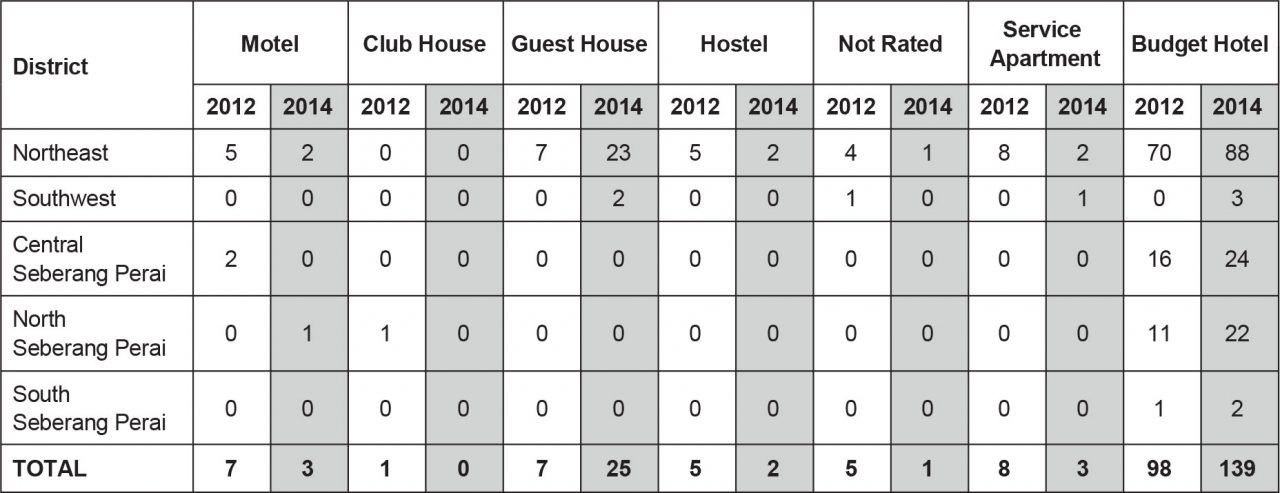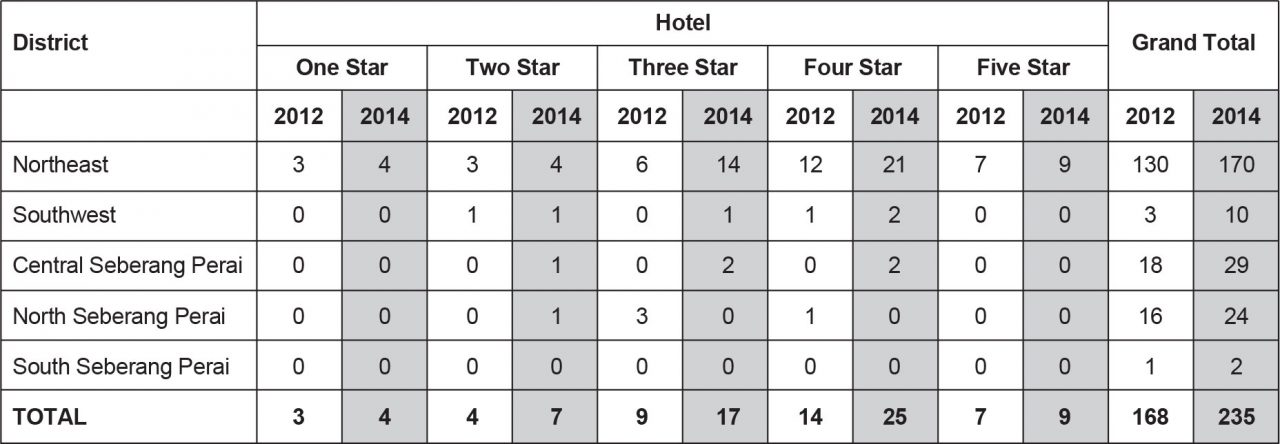Executive Summary
- Since the inscription of George Town as a World Heritage Site in 2008, heritage tourism has blossomed and the number of visitor arrivals and hotels in Penang has increased tremendously
- Heritage tourism is however not without its problems, which include issues such as authenticity, standardisation, gentrification, and cultural rights
- In view of existing strategies on sustainable tourism, three propositions can be employed: consensus building, historical discovery and mechanism establishment
- It is crucial for government agencies to develop corresponding strategies based on negotiations with various stakeholders. To secure further expertise, several local, heritage-based non-governmental organisations could be included to assist the coordination between communities and government agencies
Introduction
The term “heritage tourism” is often dubbed “cultural tourism” in reference to the exploration of a destination’s cultural artifacts and activities. It has been advocated as an attractive alternative to mass tourism, since it seems to provide local communities with economic benefits while sustaining cultural elements through the informal education of both tourists and locals.[1]
Tour guides, businessmen and stakeholders in and around the site contribute diversely to the creation of an exclusive heritage product and the promotion of a distinctive site identity. Nevertheless, there is always the fear that the local population itself may compromise the originality of the heritage site by popularising its cultural practices in order to attract more tourists.
The process of understanding this term is therefore a complicated and controversial one that turns management plans for heritage sites into a difficult dilemma. Seeking a broad consensus becomes an endless project.
Background
The importance of tourism was recognised in Malaysia’s economic agenda prior to national independence in 1957.[2] In Penang, it was only in the early 1970s that tourism, alongside industrialisation, was viewed as a way to “link the state’s economy with the rest of the world”.[3] Its natural landscapes formed the core of the state’s tourism agenda, especially the northern beaches. The 1970s and 80s witnessed rapid growth for the tourism industry. For instance, the island’s international arrivals saw a steady increase from 39,457 in 1970 to 200,927 in 1980.[4]
Although the concept of “heritage tourism” was not bandied around until the 1990s, its roots go back to a rising awareness about heritage in the early 1970s. Efforts made by local individuals, organisations and the government paved the way for Penang’s heritage conservation. For example, the formation of Penang Heritage Trust in 1986 signalled local ambitions to address heritage-related issues. The “Design Guidelines for Conservation Areas in Inner City of George Town” implemented by MBPP in 1987 specified the state’s first preservation standards for heritage. In that, George Town was categorised into five areas according to its respective historical and cultural characteristics.[5]
In the 1990s, the concept of heritage tourism was given a stronger emphasis to attract tourists. Under the state’s agenda, “new tourism resources”, inherent historical sites and cultural enclaves, were rediscovered and transformed into tourist products.[6] George Town (which was more broadly defined then as compared to today), was still a major focus, and several historical sites and enclaves were linked up as tourist routes. In line with the prevailing conservation efforts, heritage tourism was engrossed with its tangible contents such as architecture, in contrast to its intangible counterparts.
Current Situation
George Town’s inscription in 2008 as a World Heritage Site (WHS) ushered in another stage in its management of heritage tourism. In light of hugely heightened international recognition, heritage tourism in George Town today has become one of its most important sources of economic gain. This can be gauged from the increasing number of visitor arrivals and hotels in Penang. For instance, international visitors coming into the state via Penang International Airport from 2007 to 2014 has grown steadily at an annual growth rate of 7%, going from 448,000 to 718,000 respectively.[7] From 2012 to 2014, the number of non-star rating and star rating hotels swelled by three-fold in the Northeast district of Penang Island (Table 1&2).[8]
Table 1: Number of non-star rating hotels by districts in Penang, 2012 and 2014

Table 2: Number of star rating hotels by districts in Penang, 2012 and 2014

Heritage is understood as the interaction between architecture, the dynamic relationships of communities and the physical environments, and with the increasing focus on intangible cultural heritage, the management of heritage tourism in Penang could not but become more complicated. The development of heritage tourism is largely to be guided by the larger framework of recent enactments, especially the Special Area Plan (gazetted in 2016).
For instance, there are regulations that prohibit development or constructions purported to block the sea view of waterfront areas. Several critical issues concerning the impact of tourism are similarly stressed in the plan, such as uncontrolled gentrification, which may undermine the architectural integrity and authenticity of George Town.[9]
Issues Confronting Heritage Tourism
Several important and apparently inevitable issues in the development of heritage tourism are discussed below.
Authenticity and Standardisation
The value of existing heritage has always been used to justify its preservation, with due cognisance given to the perennial limitation in resources and manpower. Nevertheless, terms like “authentic” or “traditional” are used extensively to interest tourists to experience the said culture or pursue their “nostalgia”, regardless of their historical accuracy. Even the Special Area Plan states clearly that the protection of the “authenticity” or “genuineness” and integrity of a cultural landscape demonstrates a respect and depth of understanding of both the tangible and intangible heritage and how the intertwining of the two creates the value of the site.[10]
However, as society constantly changes, maintaining a particular living culture with its original features can often be very burdensome. In fact, investing too much effort in proving the authenticity of a heritage can also limit its value, as certain patterns prove popular only for a certain time. Adapting to fluctuating resources, living conditions, and schools of thought in different periods may also narrow the broad definition of “heritage” and suppress its diversification.[11] While standardisation arguably reduces branding costs, it embarrassingly limits the contents of these “heritage” products, especially to tourists making a second visit to the same place.
Gentrification and Cultural Rights
Motivated primarily by economic gains, the development of tourism also brings the huge impact of globalisation, especially gentrification, into the heritage site. With the increasing demand for food, accommodation and entertainment by tourists, businesses such as cafés, restaurants, laundry services, hostels and hotels mushroom with rising prices. Businesses established in the 1970s also form part of George Town’s heritage legacy, since hotels and other facilities constructed in that era were part of the state’s early initiatives and incentives to promote tourism.[12] Such development brought about a rapid increase in rents and led some families who had lived in the heart of George Town for nearly a century, to move out from their place of birth.
To stop local residents from establishing their own businesses would cut off their chances to make a living from the current heritage status to which they had contributed to most. Yet, giving unrestricted freedom to them would allow individuals to enrich themselves at the expense of heritage. This question begs a critical issue in the politics of cultural identity today. The extent to which the local community actually gains from heritage tourism remains an important issue to consider.
The Example of the Clan Jetties
Built on stilts along Weld Quay, this iconic waterfront settlement of seven jetties has lasted for more than a century. While its physical environment and lifestyle depict an integral part of Penang’s past as a port city, this settlement is also densely populated, with around 190 units housing more than 400 residents. The heritage status conferred to George Town in 2008 has made this settlement a core heritage zone as well as a well-known tourist spot, especially the Chew Jetty. As such, the Chew Jetty serves as a crucial example to highlight the issues pertinent to tourism and the local community.
Tourism Dilemmas
Today, at least 30% of housing units in Chew Jetty has been turned into commercial outlets to various degrees. These businesses provide mainly food and beverages, souvenirs and homestays. With more residents relying on these tourist-based businesses as their most important source of income, a paradox emerges on the balance between tourism and the community.
Although not all residents are involved in the jetty’s commercial activities, its negative impact is felt by the entire community. Among the most common issues are noise pollution, disrespect of community routines, intrusion into private spaces, damage of wooden walkways owing to increasing tourist activities, and increasing disputes within the community.
While some regulations pertaining to tourism management have been implemented, as evidenced in signboards stating the rules and times for visits, the overall legal framework remains ambiguous. In the Special Area Plan, the Clan Jetties are categorised as “100% residential properties”, with an “allowance for limited related activities and sundry shops within the residential premises”.[13] However, such a line is not easily drawn. A more detailed definition may be required to strike a sustainable balance between the community and tourism.
Another issue concerns the “authenticity” of the wooden houses. In the Special Area Plan, these buildings are categorised under “Category II” which entails the maintenance of their original façade and other adaptive use as permitted by MBPP in preserving the structure’s authenticity.[14] However, for practical and economic reasons, the community has opted for zinc sheets and cement to be used, especially for the roofs, and the front and back portion of the units. A high cost is involved in maintaining timber owing to potential termite infestation and rot. This clearly depicts the challenges raised through the different perspectives of “authenticity” perceived by the community on the one hand, and the authorities on the other.
Current Strategies and Suggestions
The George Town World Heritage Incorporated (GTWHI) was established as a world heritage office to support the local governments in heritage and conservation management of the site, especially on tourism issues.[15] This was followed by the amendment of the Town and Country Planning Act 1976 (Act 172) which incorporated the requirement for developers to submit a Heritage Impact Assessment (HIA), inclusive of tourism impact.[16]
In addition, GTWHI drafted its sustainable tourism strategy in 2016 after a workshop initiated by the United Nations Educational, Scientific and Cultural Organisation (UNESCO) office in Jakarta. This marked one of the series of workshops conducted under the framework and guidelines by the UNESCO Sustainable Tourism Toolkit, where five strategic objectives have been listed:[17]
- Ensure that the tourism revenue flows back to the local communities of the WHS by engaging with the entire tourism supply chain and policy makers;
- Ensure broad stakeholder participation in the management of tourism activities at the site;
- Increase the capacity of stakeholders through training and education to better manage tourism in the WHS;
- Communicate the Outstanding Universal Values (OUVs) of the WHS to increase broader understanding and appreciation of them, and thus ensure conservation and safeguarding of the WHS;
- Enhance the visitor experience by creating innovative heritage-based products and services, and improving health and safety (transportation, hygiene, etc).
Since these actions and expected outcomes are proposed for gradual achievement, more attention needs to be paid to the paradox of preservation and development of the heritage city so that a consensus can be attained between the authorities and the community. Some degree of decentralisation will be very helpful, and will allow decisions to be based on the communities’ understanding of their own needs, heritage and local characteristics. The authorities could facilitate matters by providing basic facilities and a platform for discussion or decision-making. To achieve such goals, three propositions can be employed:
(1) Consensus Building
To safeguard and promote George Town’s tangible and intangible cultural heritage, consensus among government officials, communities and stakeholders need to be secured. The communities should understand the direction and jurisdiction of respective governmental departments before suggestions or contributions pertaining to the planning of the heritage site are put forth. Residents of Chew Jetty for example, have the tendency to air their grievances to politicians, which is not always the appropriate channel. Since public outreach and education are part of their responsibility, government technocrats should similarly have their reports and plans, especially the Special Area Plan, elaborated in simple terms and in various languages. This could be widely supplemented with an open data system that the public could access for free.
(2) Historical Discovery
Historical studies are not only vital to the understanding of cultural heritage and the inherent diversity of a locality or community, they are also crucial in gauging their overall development progress.
While the OUVs of the WHS can act as a guideline for safeguarding heritage, communities should also be actively engaged in defining and preserving their local history based on verified historical texts.[18]
The Chew Jetty for example, has usually been seen as a unique Chinese waterfront settlement that had survived for more than a century. However, Penang’s larger historical context has always involved diverse ethnic communities and the collecting of the historical narratives with relations to the settlement would increase appreciation of the historical significance of the settlement.
(3) Mechanism Establishment
Developing dynamic mechanisms within the communities through which the appreciation of their historical significance is spread and deepened would be an empowering process. With a stronger sense of belonging, the residents would be more willing to commit and share responsibilities and rights. Such mechanisms would also encourage residents to participate in social life in a broader sense.
The authorities would be able to assist the communities by providing suitable channels to facilitate discussions.
Conclusion
To make heritage tourism sustainable, the cultural diversity of the communities need to be considered, and constant attempts to maximise consensus and involve their members need to be made. The conflicts that have been evident in recent times among Chew Jetty residents for example, reflect to an extent a lack of communication within the community and between the community and the authorities.
While the government has often been criticised for its handling of heritage issues, these issues themselves are often very diverse in nature. It is crucial for government agencies to develop corresponding strategies based on negotiations with various stakeholders. To inject further expertise into the process, relevant civil society organisations could be included to assist the coordination between communities and authorities, which will smoothen the communication process.
Lastly, better public knowledge about the workings of the authorities, and about the historical and economic significance of the issues involved would be most enabling of discussions and negotiations.
Managing Editor: Ooi Kee Beng Editorial Team: Regina Hoo, Lim Su Lin, Nur Fitriah, Ong Wooi Leng
[1] Noel B. Salazar (2010), “The Glocalisation of Heritage through Tourism: Balancing Standardization and differentiation”, in S. Labadi and C. Long (eds), Heritage and Globalisation. London: Routledge, pp. 130-131.
[2] Noor Zatul Iffah Bt Hussin, 2017, Understanding Malaysian Tourism Marketing Strategy: Continuity and Change from First Plan (1965) to Tenth Plan (2015).
[3] Penang Strategic Development Plan 1991-2000, P1-2. Institute of Strategic and International Studies (ISIS) and Penang Development Corporation.
[4] Ibid, P8-1.
[5] Heritage Management Plan Historic City of George Town 2007 pp. 41&43
[6] Preservation and Restoration of Historical Places & Artefacts, Subcommittee Report for the State Tourism Product Planning & Development Action Plan December 1992. Appendix V, pp. 15-30.
[7] Penang Economic and Development Report 2015/2016, pp.51-52. Prepared by Penang Institute for the State Government of Penang, 2016.
[8] Ibid P.37-38.
[9] George Town Historic Cities of the Straits of Malacca Special Area Plan, A5-6 &A5-7. Prepared by AJM Planning and Urban Design Group Sdn. Bhd. and Arkitek Jururancang (M) Sdn. Bhd. for the State Government of Penang, 2016.
[10] Ibid, D3-1.
[11] Sangmee Bak (2007), “Domestic and International Cultural Tourism in the Context of Intangible Heritage”, in Safeguarding Intangible Heritage and Sustainable Cultural Tourism: Opportunities and Challenges, Bangkok: UNESCO, pp. 29.
[12] Department of Information, Penang (1969), “Economic Prospects 1970s”, in Penang Today: A Report on Government Achievements and Progress, Penang: Department of Information.
[13] George Town Historic Cities of the Straits of Malacca Special Area Plan, C2-5 & C2-7. Prepared by AJM Planning and Urban Design Group Sdn. Bhd. and Arkitek Jururancang (M) Sdn. Bhd. for the State Government of Penang, 2016.
[14] Ibid, D5-1 & Figure D5.25.
[15] Ibid, B3-19.
[16] Ibid, B3-29.
[17] http://whc.unesco.org/sustainabletourismtoolkit/
[18] George Town fulfil 3 of 10 criteria of Outstanding Universal Values (OUVs). Please refer to the website: http://whc.unesco.org/en/list/1223
You might also like:
![Synergy among Stakeholders is Key to the Sustainability of Cultural Tourism in Penang]()
Synergy among Stakeholders is Key to the Sustainability of Cultural Tourism in Penang
![Picking the Brains of GLC Heads: Policy Priorities for Penang in the Coming Decade]()
Picking the Brains of GLC Heads: Policy Priorities for Penang in the Coming Decade
![Recognising Malaysian Soft Power after May 9, 2018]()
Recognising Malaysian Soft Power after May 9, 2018
![On the Many Economic Benefits of Flexible Work Arrangements]()
On the Many Economic Benefits of Flexible Work Arrangements
![The Digital Free Trade Zone – A Path to Inclusive Growth?]()
The Digital Free Trade Zone – A Path to Inclusive Growth?






